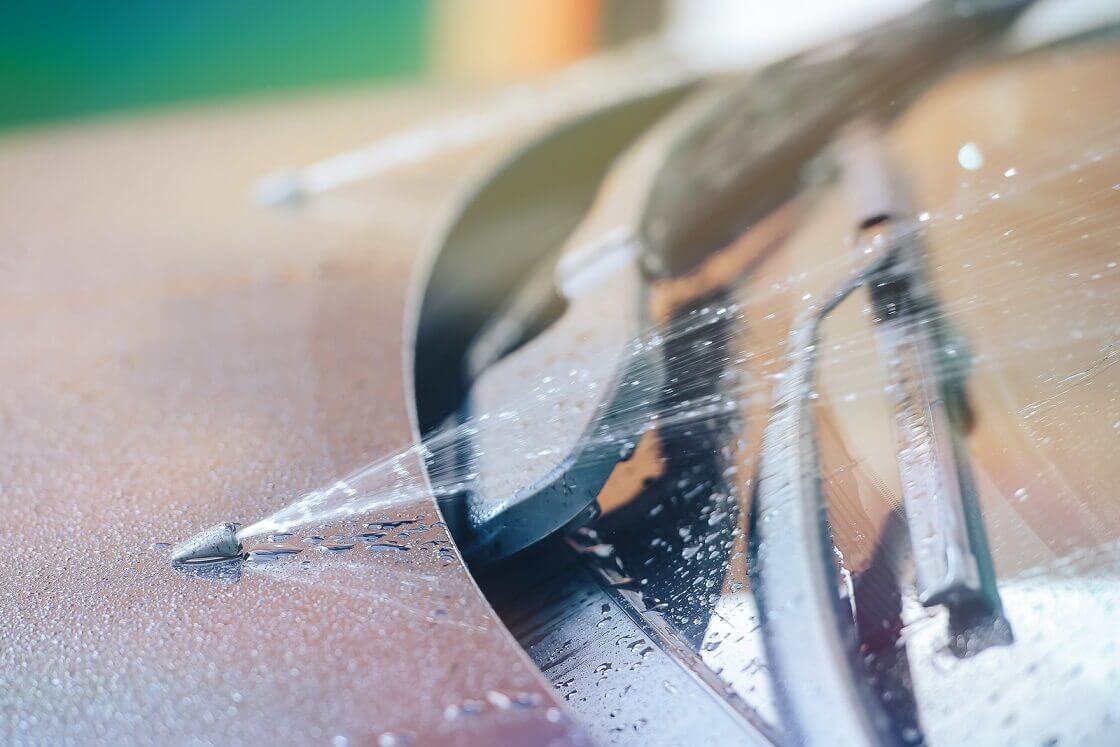To ensure you have good visibility of the road ahead, you need to use screen wash.
Read on and find out what screen wash is, what it does and how to top it up.
Page Contents
- How Do You Top Up Screen Wash?
- When Should You Top Up?
- How Much Should You Use?
- What Is Screen Wash?
- What Does It Do?
- Where Do You Put Screen Wash?
- What Is the Screen Wash Symbol?
- Should You Dilute Screen Wash?
- Can You Use Water as Screen Wash?
- Where Can I Buy Screen Wash?
- Can No Screen Wash Lead to MOT Failure?
How Do You Top Up Screen Wash?
Topping up screen wash is a straightforward process.
Simply locate the windscreen washer fluid reservoir under your car’s bonnet.
Open the cap and pour the screen wash fluid in until it reaches the maximum line.
You may wish to use a funnel for this part.
Remember to replace the cap on the reservoir to seal it.
You should refer to your vehicle handbook, as some people can confuse the reservoir with the AdBlue filter tank in some diesel vehicles.
When Should You Top Up?
Modern cars will let you know when the screen wash is running low.
The reminder light is orange and will come on when it is running low rather than when it has run out.
The size of the windscreen washer bottle – and how often it needs to be topped up – can vary depending on the make and model of your car.
How Much Should You Use?
The amount of screen wash fluid you will need will vary depending on the capacity of your car’s reservoir.
This will also vary depending on the time of year, as screen wash is designed to lower the freezing point of the water in the reservoir.
In winter, that temperature will need to be lower so the ratio will be higher.
The ratio for particulate temperatures will be detailed on the bottles.
You should top up to the fill line or otherwise according to the manufacturer’s instructions.

What Is Screen Wash?
Also known as windscreen washer fluid, screen wash is a solution used to clean your car’s windscreen.
Screen wash can remove any dirt, grime and insects, thereby improving your visibility whilst driving.
What Does It Do?
Screen wash is designed to effectively clean the windscreen without causing damage.
It contains detergents and sometimes contains antifreeze agents, helping to prevent freezing in cold temperatures.
Screen wash also includes water softener, preventing limescale from building up in the pipework and squirter jets.
Where Do You Put Screen Wash?
You put screen wash in the screen wash reservoir, which is usually located near the engine compartment.
The reservoir may have a blue cap with a windscreen symbol on it.
You can refer to your owner’s manual for more information.
What Is the Screen Wash Symbol?
The screen wash symbol usually depicts water droplets and a screen, with the cap normally being blue.
The windscreen washer cap should pull off, not screw on and off.
Should You Dilute Screen Wash?
Certain screen washes come as concentrated solutions.
For this reason, you should only dilute these to the ratios specified by each manufacturer.
Many windscreen washer fluid bottles are already at the right dilution levels, meaning you can pour them straight into the tank.
Can You Use Water as Screen Wash?
You cannot use water alone as screen wash, as this won’t effectively remove the grime, oils or grease that can build up.
Where Can I Buy Screen Wash?
You can buy screen wash from supermarkets, filling stations, DIY stores and online.
Can No Screen Wash Lead to MOT Failure?
If your visibility is impaired, you can fail your MOT.
That’s why it’s so important that you check the condition of your windscreen wipers and top up your screen wash when needed.






